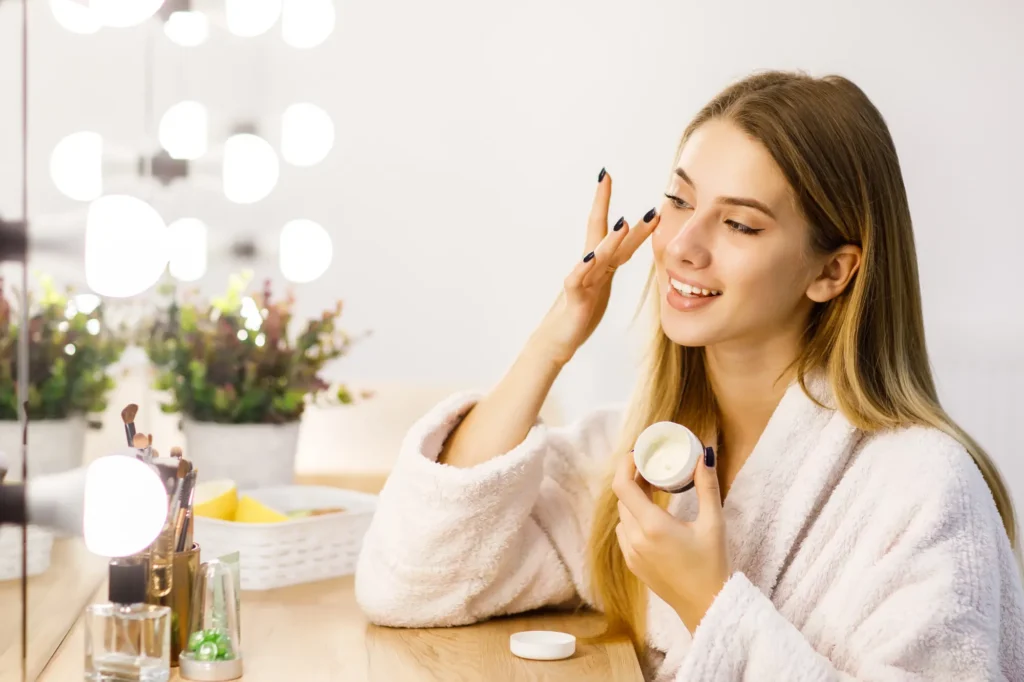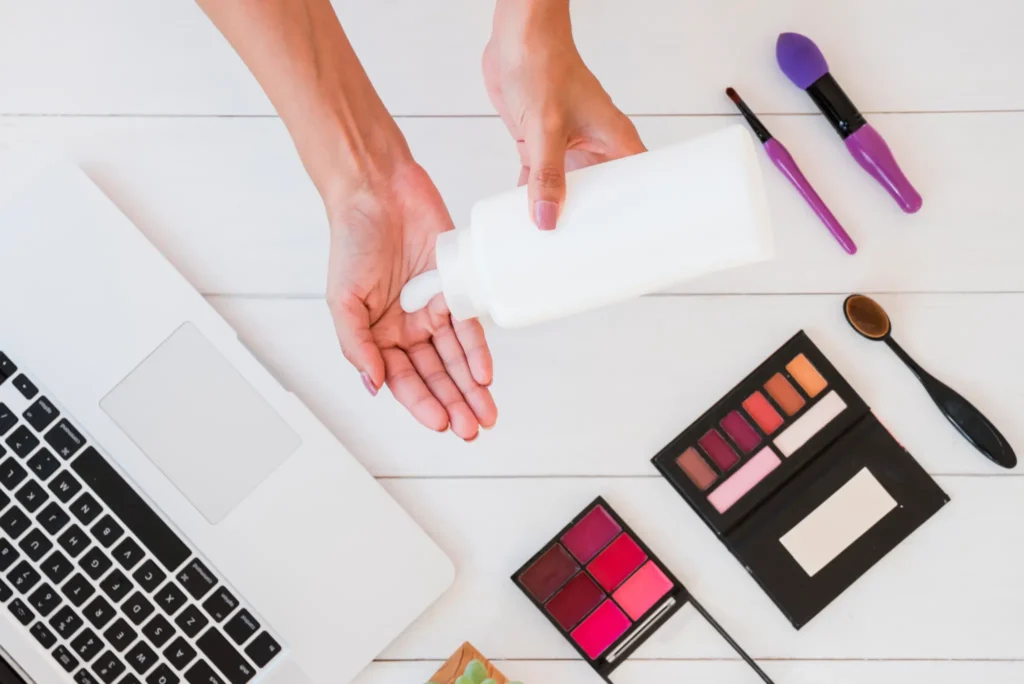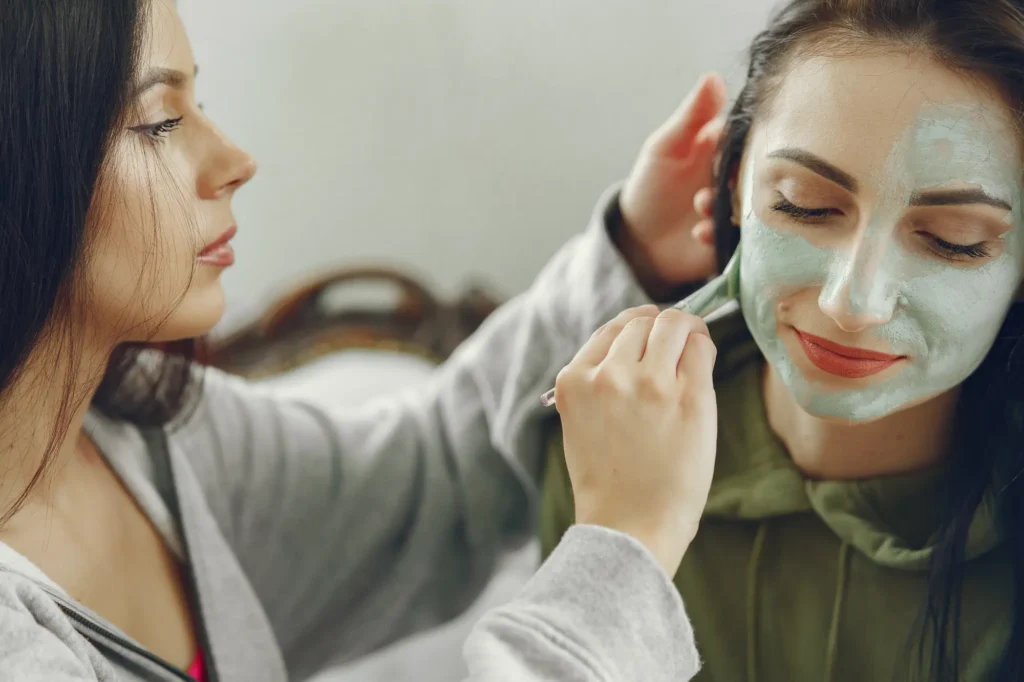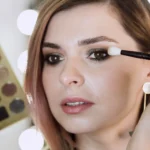You’re not alone if you’ve ever experienced redness, discomfort, or a breakout after experimenting with new cosmetics. Sensitive skin is genuine and has to be treated as such. Applying makeup is about feeling nice without running the risk of discomfort for those with sensitive skin, not just about looking good.
The good news is that you can apply cosmetics to maintain the happiness and calmness of your sensitive skin. The correct products, a little education, and a lot of kindness—to yourself and your skin—are all you need.
Step 1: Recognize Your Skin Type
Give your skin some attention before you even grab an application brush or a facial blender.
Skin that is sensitive reacts quickly. Redness, dryness, itching, or breakouts are possible side effects, particularly when using specific products. Fragrances, alcohol, harsh preservatives, and even changes in the environment can all act as triggers.
If necessary, keep a skin notebook. Why do flare-ups occur? Which goods help you relax? Knowing the individuality of your skin will help you make decisions that it will appreciate.

Step 2: Start with Skincare and Prepare Gently
Healthy, hydrated skin is the first step towards the ideal makeup appearance.
Cleaner: Make use of a non-foaming, fragrance-free cleanser. Steer clear of anything that contains essential oils, powerful acids, or exfoliating particles. Consider “milky and gentle.” A moisturizing cream cleanser or micellar water is ideal.
Moisturizer: A moisturizer that repairs the skin’s barrier is necessary for sensitive skin. To seal in moisture, use it while your skin is still a little wet.
Always wear sunscreen: Yes, especially on overcast days. For sensitive skin, an organic sunscreen in titanium dioxide or zinc oxide is ideal. Purchasing a mild mineral sunscreen is worthwhile because chemical sunscreens can aggravate sensitive skin.
Pro Tip: Before applying makeup, give your skincare routine five to ten minutes to settle.
Step 3: Select Clean and Calming Makeup Products
You don’t have to feel overwhelmed by this step.

Foundation
Choose hypoallergenic, fragrance-free foundations. Because they typically contain less ingredients and allow your skin to breathe, mineral powder foundations are frequently a wonderful option.
Look for foundations that are branded “non-comedogenic,” “dermatologist-tested,” or “sensitive skin-friendly” if you prefer liquid. Gentle skin types are catered to by brands like Clinique, BareMinerals, and Almay, which is why they are so well-liked.
For light coverage, you can also think about using a BB cream or tinted sunscreen that contains calming ingredients like chamomile or aloe vera.
Concealer: Select a moisturizing, creamy concealer that blends seamlessly without pulling at the skin. Anything very matte or dry should be avoided as it might highlight irritation or flakiness.
Bronzer and blush: While powders are fine, cream blush and bronzers tend to look better on delicate skin.
Makeup for the Eyes: The eyes are particularly sensitive. If you have watery eyes or wear contact lenses, look for mascaras and liners that have been evaluated by ophthalmologists.
Steer clear of anything with a lot of pigment or glittering shadows because these could sometimes contain irritating metals or dyes.
But for the eyes there are many styles and different types of makeup “e.g. Smokey eye“
Step 4: Tools and Techniques for Application Matters
In addition to reacting to cosmetics, sensitive skin can also react to the application method.

Brushes and sponges: Make sure your cosmetics equipment is soft and clean. Use a mild baby shampoo or brush cleansers to clean brushes at least once every seven days.
Instead of tugging or rubbing, softly dab and smooth your makeup on. Products can be melted into the layers of skin without little resistance by using a moist sponge.
Fingers?
Fingers that are clean can be excellent tools!Their warmth facilitates makeup mixing naturally. However, make sure to thoroughly wash your hands before touching your face.
Step 5: A Simple Look That Creates Wonders: Less Is More
You can look radiant without applying ten layers of highlight and contour, especially if your skin feels sensitive.
This is a simple makeup look that is suitable for delicate the complexion:
- Lightweight foundation or a tinted moisturizer
- Hydrating concealer for imperfections and under the eyes
- For a healthy flush, use cream blush.
- To define brows, use tinted brow gel.
- Eyeshadow that is neutral, if preferred
- mascara that lengthens (omit the waterproof)
- Sheer lipstick or tinted lip moisturizer

Step 6: Keep an Eye Out for Indications—Your Skin Speaks
Your skin may respond even to the most moderate routine. That simply indicates that your skin needs a little tweaking, not that you did anything wrong.
- Keep an eye out for:
- Burning or tingling when using items
- New pimples or lumps that resemble a rash
- Swelling or redness
Stop applying the new products and return to your basic skincare routine if you experience any of these. Before using a new cosmetic product, you may even perform a patch test by applying a small amount to your jawline and watching for a reaction for a full day.

Step 7: Removal: Take Care When Removing It
For sensitive skin in particular, removing makeup is just as crucial as applying it.
Make use of a mild, odorless micellar water or cream cleanser. Steer clear of cosmetic wipes because they frequently contain harsh preservatives and can be very abrasive.
Make sure that everything you use is soothing and designed for sensitive skin.
A Remark on Dermatologists and Patch Testing
Patch test a product if you’re not convinced about it. Put a tiny bit on your jawline, behind your ears, or on your wrist, then wait a day. If all is well—excellent! If not, a full-face flare-up is out of the question. They can suggest the safest makeup brands or chemicals for you and assist you in identifying allergens.
Sensitive skin is a sign, not a defect.
It just means that you take a slightly different approach to makeup—more slowly, carefully, and in harmony with your body.
And isn’t it itself kind of lovely?
Each brushstroke turns into a self-care ritual. Each item you select communicates the message, “I see you, skin, and I’m listening.” That gives you a sense of empowerment. That is therapeutic.
Take your time, then. Take your time experimenting. Follow your skin’s lead. When you wear makeup on a daily basis or only on special occasions, keep in mind that the purpose of makeup is to warmly and boldly celebrate who you are, not to hide it.
Conclusion:
Here is a brief summary of your cosmetics experience for sensitive skin:
- Use only mild, scent-free products.
- Get ready with soothing skincare products and sunscreen.
- Select light, permeable clothing
- Makeup should be removed softly; avoid vigorous washing.
- Your skin understands what it needs, so pay attention to it.
- You can take pleasure in makeup that respects your skin and accentuates your features with a little attention to detail and the appropriate routine. And you feel powerful when your skin is content.


